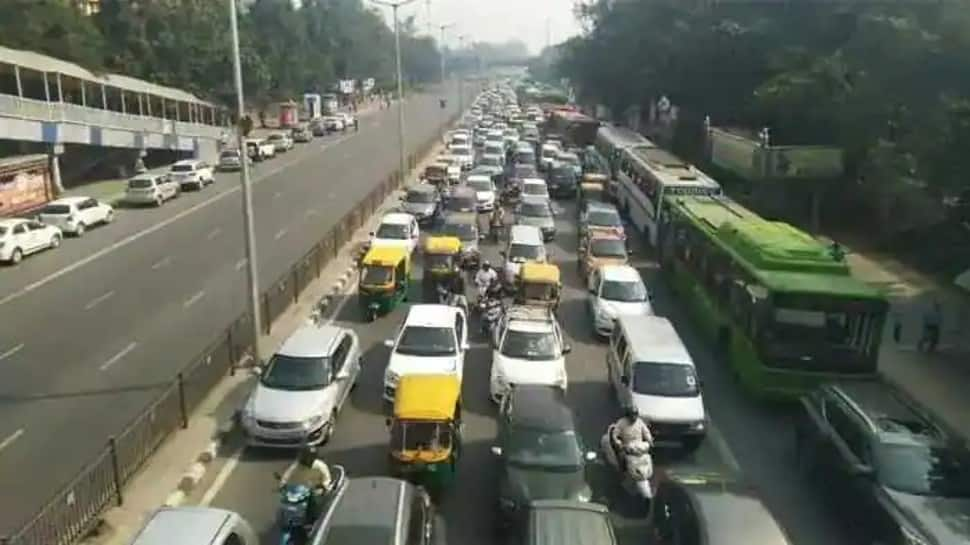For a country to flourish and grow, its road network is essential. However, the work done at the local level, or in cities, is what will ultimately determine the growth of the entire country. Similarly, highways that are well-maintained and are not congested help a city remain vibrant and prosperous. Unfortunately, the city may eventually "clog its veins" due to population and economic growth, leading to an early end. One of the cities that has had this issue is Delhi. In the past three decades, while the length of the roadways has merely quadrupled, the number of motor vehicles on Delhi's roads has increased by a factor of almost 21. The Delhi Traffic Police estimated that there were more than 1.22 crore registered automobiles across all categories in Delhi in 2021.
Although the number of motor vehicles increased by approximately 21 times between 1981 and 2021, the road length has only doubled, from 15,487 km to 33,198 km during the period under review. Thus, the vehicle density per sq km has increased manifold. Theoretically, there are 371 vehicles per sq km in Delhi.
The ever-increasing congestion on the capital roads has manifested itself in numerous transportation problems. The traffic volume on main corridors has almost crossed the threshold of the carrying capacity of the roads. With the rise in population and more vehicles on the street, the risk of crashes has also increased.
The heterogeneity and magnitude of vehicle population, the unpredictability of human behaviour, economic constraints, insufficient road markings and signages, defective road designing, and deficiencies in vehicle design are some of the factors leading to road crashes in Delhi. In addition to this, drink-driving, overspeeding, overloading, and violation of traffic rules are the common causes of traffic crashes.
As per the traffic police, as many as 1,239 people lost their lives in road accidents in the national capital in 2021, while 4,273 others suffered injuries. In 2020, Delhi reported the highest number of road crash deaths (1,196), followed by Chennai (872) and Bengaluru (646).
Further, due to the fast development of the National Capital Region and particularly the satellite towns around Delhi, such as Noida, Gurugram, Manesar, and Sonepat, the capital city is facing an additional brunt of an influx of higher volume of traffic, thereby congesting important inter-state roads and highways connecting the city.
Undoubtedly, it is an uphill task to maintain traffic in a city with such a huge population and several vehicles. However, traffic police officials say they effectively enforce the law on the road. Enforcement is necessary for making people follow road safety laws. Effective enforcement is the key deterrent factor in ensuring road discipline and increasing public awareness.
"In 2020-2021, the strategies for prosecution of errant road users were pro-actively made, reducing the number of crashes. Emphasis was given on selective quality prosecution to maximise the positive impact of enforcement on road discipline," officials said.
In 2021, a total of 13,23,556 on the spot challans (1,78,634 compounded and 11,44,922 to court) and 65,69,985 notices (8,02,552 compounded and 41,71,650 to court) were issued and a compounding amount of Rs 9,79,80,500 and Rs. 71,82,19,300, respectively, was realised.
The prosecution includes spot challans by traffic circle staff, notices issued on the complaints received on social media or through the traffic helpline, Traffic Sentinel, RLVD, OSVDs, interceptors, etc.
According to the traffic police officials, 2020 and 2021 were especially challenging for them because of the spread of the Covid-19 pandemic and the consequent lockdown, and the requirement of social distancing in all aspects of life.
"Traffic police adapted to the new realities and tweaked the enforcement strategies. Owing to the necessity of social distancing, prosecution drive that requires face-to-face interaction with the traffic violators was suspended, and electronic prosecution through `Violation on Camera App,` Gantry-mounted red light violation detection camera and speed violation detection camera were chosen for traffic enforcement," they said.
The installation of camera-based violation detection systems helped the traffic police a great deal in the enforcement of traffic laws during Covid times. While the number of the spot challans increased from 10,99,414 to 13,23,556, the number of notices decreased from 1,27,03,559 to 65,69,985. This primarily happened due to installing the RLVD camera system at 37 prominent junctions and the OSVD camera system at 100 locations. This electronic enforcement proved to be a milestone in contactless prosecution.
With inputs from IANS
















